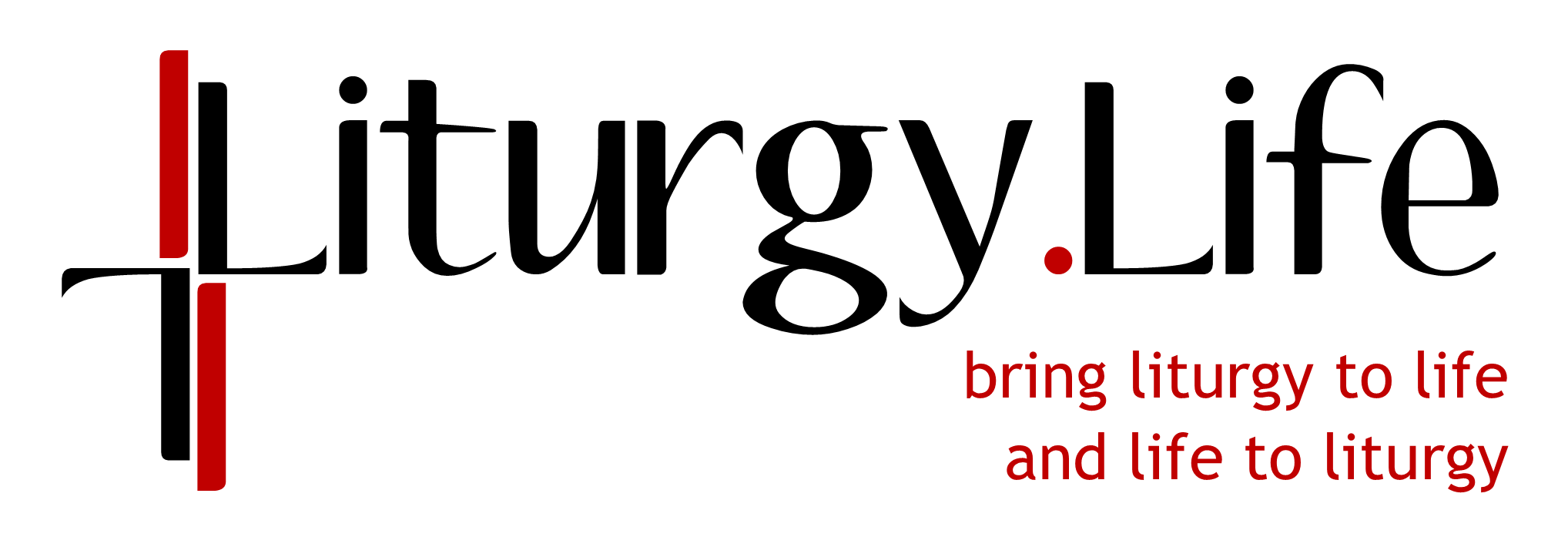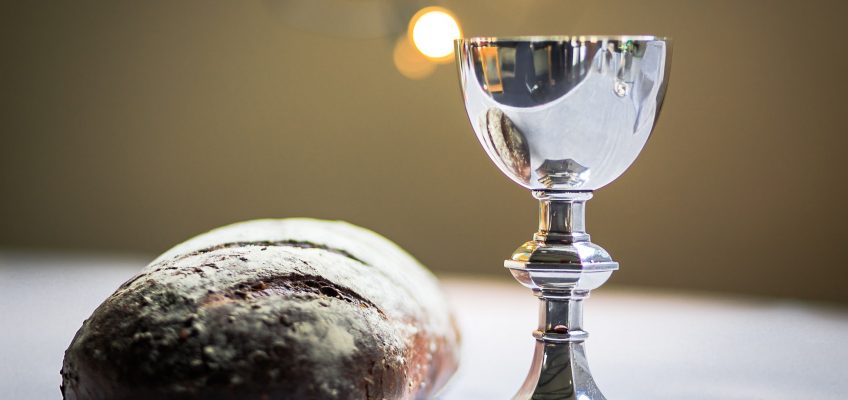Father Augustine was sluggish getting ready for Mass. The strain of last night’s Easter Vigil—his 34th or 35th; he couldn’t remember—had significantly weakened him. But he had to celebrate Easter morning with the neophytes.
After his brief homily, the catechumens were dismissed and the doors closed. Father Augustine moved slowly to the wooden altar in the center of the basilica and prayed the ancient prayer of thanksgiving. Then he asked the neophytes to gather close to him.
He pointed at what lay on the altar—some bread and a cup of wine, now changed into the Body and Blood of Christ. He said to the neophytes:
The mystery that you are lies there on the table.
Be what you see, and receive what you are. (Sermon 272)
The point is participation
For St. Augustine, the entire purpose of the catechumenate was to bring the seekers to this point. The point at which they would participate in the sacred mysteries and by doing so become, themselves, the Mystery of Christ.
For years, they had participated in the liturgy as catechumens. As their ancestors had done for centuries before them, they sang hymns, chants, and psalms during the first part of the liturgy. After they were baptized, they remained with the faithful to pray fervently for themselves and for all who were in need. They prayed or sang the Creed and the Lord’s Prayer, which had been handed on to them during their catechumenate. They responded to the dialogue that began the great prayer of thanksgiving and sang their hosannas with the angels.
It is by participating in the liturgy that we derive the true Christian spirit. Or to say it in Augustine’s terms, it is through our participation in the liturgy that we become the Mystery we celebrate. Share on XAnd most significantly, they approached the altar in faith and made a throne with their hands to receive the body of Christ. They bowed to the chalice and drank from the cup of salvation. Their amens rang out as a confession of belief in the mystery St. Augustine had taught them they now are.
That all changed shortly after Augustine died in 430. The world was changing, and in response, the church became more inward focused. The catechumenate died out, and the people became more and more passive in the celebration of the liturgy. In the years just before the Second Vatican Council, the participation of the faithful in the liturgy was almost completely suppressed.
How the catechumenate came back
The seeds of reform, however, began to be planted about 100 years before the council. The reform movement had grown to the point that every pope of the early twentieth century (Pius X, Benedict XV, Pius XI, Pius XII, John XXIII and Paul VI) made the restoration of the participation of the laity in the liturgy a central concern.
On December 4, 1963, Paul VI promulgated the Constitution on the Sacred Liturgy, which solemnly declared:
In the restoration and promotion of the sacred liturgy, this full and active participation by all the people is the aim to be considered before all else; for it is the primary and indispensable source from which the faithful are to derive the true Christian spirit. (14)
The reason the council made the participation of the people so central to the reform of Vatican II was the same reason Augustine taught his neophytes. It is by participating in the liturgy that we derive the true Christian spirit. Or to say it in Augustine’s terms, it is through our participation in the liturgy that we become the Mystery we celebrate.
If this is true, then several important points follow:
- Bishops and priests—who preside over the liturgy—must be deeply trained in the proper celebration of the rites.
- Beyond just knowing how to celebrate the rites well, bishops and priests “must zealously strive to achieve [the full and active participation of the people], by means of the necessary instruction, in all their pastoral work” (CSL, 14).
- The people must understand that participation is not optional. “Such participation by the Christian people as ‘a chosen race, a royal priesthood, a holy nation, a redeemed people,’ is their right and duty by reason of their baptism” (CSL, 14).
- It is by our participation in the liturgy that we participate in the life of the Divine Trinity.
Our call to participate
Most people agree that this central concern of the Second Vatican Council has been a great success. In most of our parishes, people are participating in the liturgy in the way our ancestors did for the first five centuries of the church.
On the other hand, it is not difficult to find parishes that have either not yet fully embraced the liturgical mandate of the council or who have grown lax in their zeal for the promotion of the full and active participation of all the people.
At the time of Augustine’s death, it looked like the church was on solid ground and would continue to celebrate liturgy in a way that involved the full participation of the entire Body of Christ. And yet, it didn’t take long at all for the participation of the people to fade away.
We have to be vigilant in continuing to carry out the reforms mandated by the church. Our full and active celebration of the liturgy is “the primary and indispensable source” of our life in Christ.
See also these related articles:
- Our entire being
- Called to engage
- The Creed enlightens our vision
- In line with Christ
- Christ our compass
- You are witnesses
- Bulletin Shorts for the Twenty-Fifth Sunday in Ordinary Time
- The four dangers of weak liturgy
- We will need courage for parishes of the future
- Liturgical principles to guide your planning



Leave a Reply